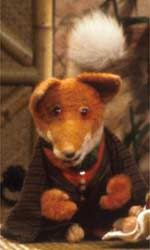Has anybody heard of the fox breeding experiment carried out over 40 odd years in Russia by a chap called Belyaev?
Apparently he set about to breed a tame fox and selected rigorously for more than average tameness. After several years of selective breeding he had his tame foxes, BUT the foxes had apparently changed their appearance to resemble border collies. Collie or general dog-like traits had not been selected for but it seems that there are certain characteristics that tend to arise more often in domestic populations.
As the most striking thing about these reports to me is the startling appearance of the collie foxes, I would have expected to be able to find colour pictures on the Internet. I can't find any. There are a few grainy old black and white pictures and some sketches, but that's all.
Does anyone have any pictures of these animals or is it a scam or what?
Apparently he set about to breed a tame fox and selected rigorously for more than average tameness. After several years of selective breeding he had his tame foxes, BUT the foxes had apparently changed their appearance to resemble border collies. Collie or general dog-like traits had not been selected for but it seems that there are certain characteristics that tend to arise more often in domestic populations.
As the most striking thing about these reports to me is the startling appearance of the collie foxes, I would have expected to be able to find colour pictures on the Internet. I can't find any. There are a few grainy old black and white pictures and some sketches, but that's all.
Does anyone have any pictures of these animals or is it a scam or what?


